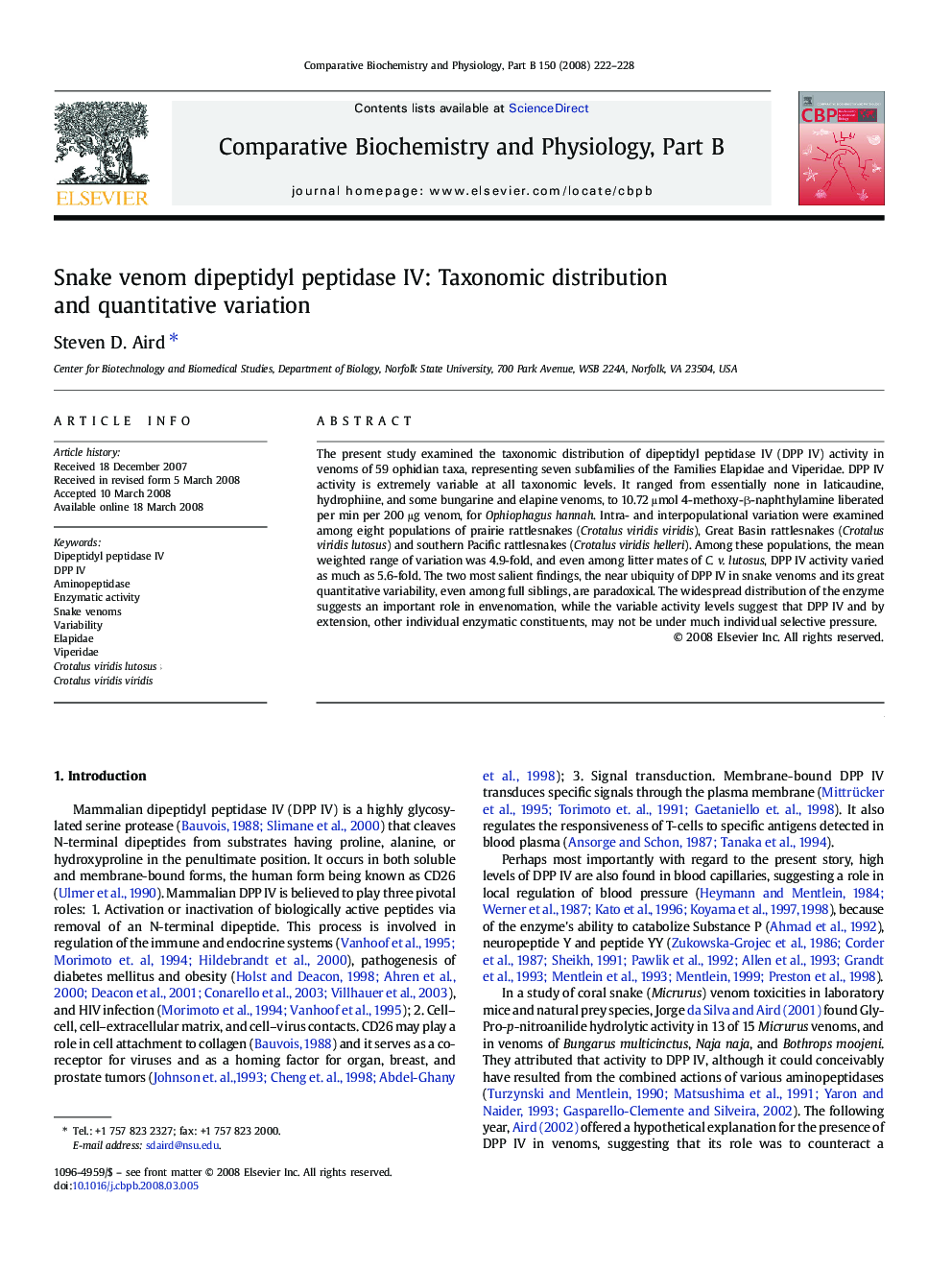| Article ID | Journal | Published Year | Pages | File Type |
|---|---|---|---|---|
| 1976032 | Comparative Biochemistry and Physiology Part B: Biochemistry and Molecular Biology | 2008 | 7 Pages |
The present study examined the taxonomic distribution of dipeptidyl peptidase IV (DPP IV) activity in venoms of 59 ophidian taxa, representing seven subfamilies of the Families Elapidae and Viperidae. DPP IV activity is extremely variable at all taxonomic levels. It ranged from essentially none in laticaudine, hydrophiine, and some bungarine and elapine venoms, to 10.72 μmol 4-methoxy-β-naphthylamine liberated per min per 200 μg venom, for Ophiophagus hannah. Intra- and interpopulational variation were examined among eight populations of prairie rattlesnakes (Crotalus viridis viridis), Great Basin rattlesnakes (Crotalus viridis lutosus) and southern Pacific rattlesnakes (Crotalus viridis helleri). Among these populations, the mean weighted range of variation was 4.9-fold, and even among litter mates of C. v. lutosus, DPP IV activity varied as much as 5.6-fold. The two most salient findings, the near ubiquity of DPP IV in snake venoms and its great quantitative variability, even among full siblings, are paradoxical. The widespread distribution of the enzyme suggests an important role in envenomation, while the variable activity levels suggest that DPP IV and by extension, other individual enzymatic constituents, may not be under much individual selective pressure.
